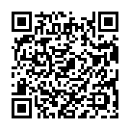Spotting ethical misconduct in scholarly research: The STAP case
The
STAP stem cells situation, as I write this down, represents a can of worms whose lid has been pried open by scores of scholarly commentators, most of them active researchers in the field, on social media over the last few weeks. Researcher forums like
PubPeer and
blogs like that of Paul Knoepfler are rife with chatter on the minutiae of the case, Nature and RIKEN have announced investigations into the matter, and some of the STAP authors have released a
protocol exchange document (on March 5th) for public perusal.
It is arguable that the STAP story is a shot in the arm for post-publication review—there’s no such thing as too many heads when it comes to assessing the validity of science. In this case, it may very well be that riding on a string of successful replications by independent labs worldwide, proof of the findings is incontrovertibly established. This is not entirely unthinkable. However, is it good practice to rely on post-publication correction to right the wrong? Authenticating experimental protocol needs time and resources. We cannot always wait for such exercises to run their course. What if it wasn’t about stem cells? Not all research domains draw scientific attention on this scale. What if the study pertained to a field with a lesser appeal?
There is a
view emerging from industry quarters that the main concern with the STAP articles may not pertain to the replicability of the methods after all. Even if the results are reproduced elsewhere, questions on the integrity of the research will remain because of issues of
textual similarity and image duplication. Now plagiarism and image manipulation are practices that are best identified and flagged before research enters the public domain. It is much easier to spot textual borrowing today than it was a decade ago. Yet if a journal of the stature and means of Nature
cannot police plagiarism in all its submissions, what does it say about the chances that lesser titles will pick out instances of textual borrowing and image manipulation?
Evidently, there have to be checkpoints before a research article enters the publication cycle. Such checks can lessen the burden on overworked journal editors and reviewers pre-publication, not to mention save expenditure of intellectual resources and public money on fraudulent science post-publication.
It is for outlining and implementing these checkpoints that the industry needs to show initiative. At Editage, we run plagiarism checks on manuscripts opting for publication support and notify authors in cases of textual similarity. Detecting image manipulation, however, has not proved to be as straightforward a process. Currently, we follow available guidelines, like those of
Elsevier and
Nature, to spot instances where images could have been more than just cleaned up for clarity. Plans are afoot to curate a comprehensive set of guidelines that any reviewer can use to verify image integrity. None of these steps guarantee comprehensive protection against ethical misconduct, yet without them we run the risk of being labeled careless and callous to the cause of science.
PS: Here’s a
dramatized take on the issue of protecting research subjects and avoiding research misconduct by The Office of Research Integrity. The free video, called The Research Clinic, is expected to be out on March 28th.
Contributors
